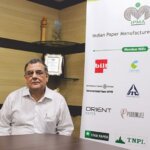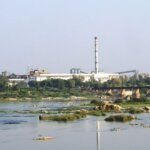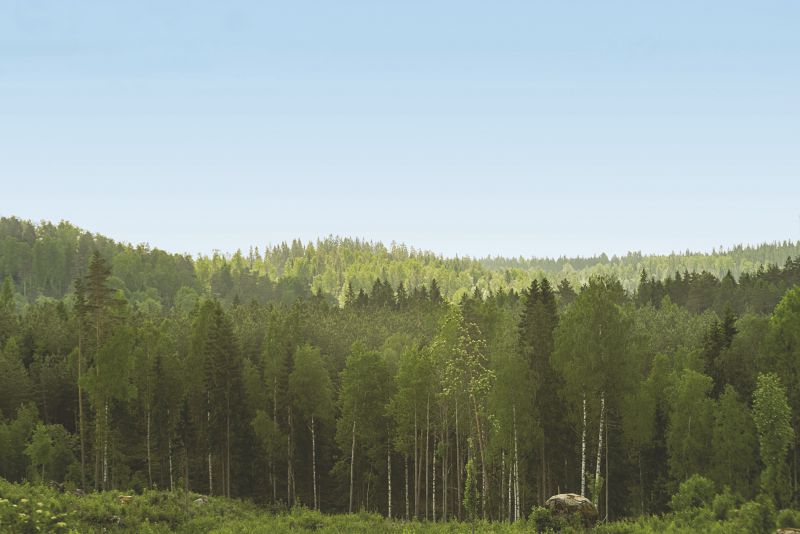
The Finnish group is known worldwide for creating renewable, forest-based value chain spawning its various business areas which all are at the forefront of the industry in terms of environmental performance, energy efficiency, and profitability. The group’s strong value chain utilizes wood to its maximum in different phases as pulp, wood products, paper, paperboard, finished products, or bioenergy. Metsä’s innovation in bio-product and bio-energy has strongly demonstrated the business potentials of bioeconomy and circular economy.
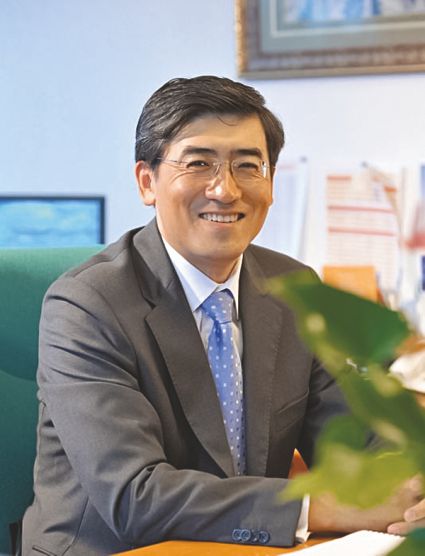
President – Asia-Pacific, Metsä Group
Paper Mart recently had a healthy discussion with Mr. Wangqiu Song, President – Asia-Pacific, Metsä Group on Metsa’s transformational approach on bio-based economy and business, where environment and sustainability are considered as critical as are business and profitability.
Paper Mart: Metsa Group has created a strong forest based value chain, which also forms its core business areas. Tell us how it all evolved to create a web of interconnected yet separate business areas, where sustainability and preservation of nature are effectively wedded to business and profitability.
Wangqiu Song: In the beginning of the 18th century, Finnish forest owners combined their forces to achieve stronger position in terms of wood trade. Metsäliitto Cooperative started its operations in 1934 with wood export and sales. The industrial operations started with sawmill operations a bit later expanding to chemical pulp industry. The Finnish forest industry grew rapidly and became increasingly international from the 1960s onwards. It developed into one of the cornerstones of well-being and prosperity in Finland. Metsäliitto Cooperative expanded its operations as well. Important milestones included the formation of Metsä-Serla in 1986 and the growth and development of the pulp industry within Metsä-Botnia Oy. In the 1990s, a decade of rapid growth, Metsäliitto invested strongly in both the Finnish and international markets.
By the early 2000s, Metsäliitto Group had become an international forest group with more than 25,000 employees in dozens of countries. A systematic structural change was implemented between 2005 and 2013, with Metsäliitto Group changing its name to Metsä Group and renewing its corporate identity. Total exit from printing and writing papers was made. The change represented the final stage in a profound restructuring to create a unified and competitive forest industry group. Its operations continue to be founded on the principles of cooperation and working for the best of Finnish forest owners.
PM: Wood is a fundamental requirement for most of the pulp and paper industry and Metsa is the market leader in wood and energy wood supply in Finland. Does Metsa own forests or just manages them? What do you mean by the term sustainable forest management? Tell us also what exactly you do under sustainable forest management?
WS: Metsäliitto Cooperative is the parent company of Metsä Group and owned by approximately 104,000 Finnish owner-members. They own about half of Finnish commercial forestland. The cooperative sources the majority of the wood it uses from the Finnish owner-members. Thus, Metsä Group does not own forest with the exception of some associated companies and leased forests.
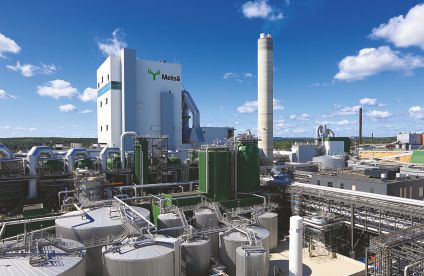
Sustainable forest management means that Metsä Group always knows the origin of the wood it sources and with forest certification ensures sustainable forest management. Of the wood we use, 100 percent comes from certified or controlled forests. Forest certification sets a wide range of sustainability requirements, varying from safety at work to nature values and future growth of the forest. In 2017, 88 percent of the wood procured by Metsä Group was PEFC and/or FSC certified.
Sustainable forestry always includes forest renewal. Each felled tree in end harvesting is replaced with four seedlings in the forest. Annually about 30 million seedlings delivered to Finnish forest owners. Biodiversity is best maintained by combining nature management and protection methods. The share of protected areas in Finland accounts for 2.7 million hectares, i.e. 12 percent of Finland’s total forest area of 23 million hectares. For example, high biodiversity stumps support biodiversity by offering habitats for various birds, insects and fungi as they gradually decay. High stumps are an easy way for the forest owners to support biodiversity. 70 percent of forest owners leave high stumps in their forests.
Metsä Group provides its employees as well as harvesting contractors and wood suppliers with environmental training on a regular basis. Compliance with natural values is assessed in many ways as part of forest work. Monitoring includes audits by internal auditors and the forest authorities, third-party audits of management systems, and audits included in forest certification processes.
PM: Metsa Fibre is a leading global producer of softwood pulp, whose demand is steadily growing across the world. Tell us what you do to make high quality pulp and how the concerns like sustainability and environmentalism are ensured in the pulp making process without altering the quality.
WS: Metsä Fibre is developing its business in accordance with the principles of continuous improvement and by investing in cutting-edge technology and competence development in all of its mills. With the Äänekoski bioproduct mill, the environmental performance rises to a new level.
The production units and operating models are in very good shape. By continuously investing in the personnel’s competence development and well-being at work, the company keeps gaining competitive advantage.
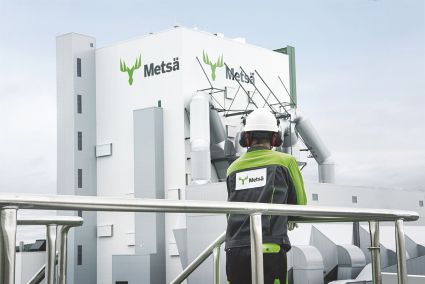
Very high degree of operational reliability creates a basis for the continuous improvement of production levels and the product quality, cost-effective and environmentally efficient production, and safety at work.
Metsä Fibre works in close cooperation with its customers so that our products and services will meet their needs. The technical services offered by Metsä Fibre’s experts help fine-tune a customer’s production process.
PM: Paper based packaging is fast growing across globe, and Metsa Board is one of the most acknowledge producers of folding boxboard and white fresh forest fiber linerboard. Kindly elaborate briefly the production process, quality, and other benchmarks associated with your boards. What are your strengths in making board products?
WS: The fresh fiber paperboards produced by Metsä Board are light, pure, safe and easily recyclable with 100 percent of the fibers used in them traceable to sustainably managed northern forests. This success relies on continuous innovation, high-quality wood raw material, strong fiber know-how and the use of cutting-edge production technologies.
Light-weight, high-quality paper-boards are more relevant than ever. Back in the 1990s, Metsä Board decided to invest in research and development into BCTMP (bleached chemi-thermomechanical pulp). BCTMP provides lightweight, printability, brightness, and stiffness for board.
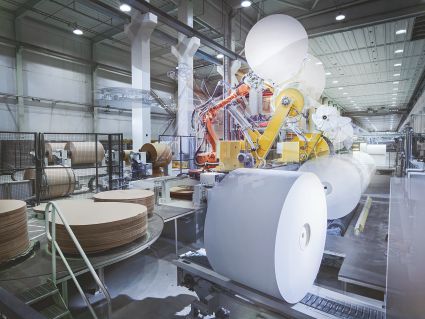
Lightweight paperboards are resource-efficient: producing them requires less energy, water, and raw materials than the production of traditional paperboards. They also generate less waste. The main raw material – pure, safe, fresh fiber – is fully traceable and mostly certified. Metsä Board does not use recycled fibers, thus its paperboards are safe to use also in direct food contact.
Metsä Board’s product range is complemented by a range of expert services. Metsä Board possesses first-class competence in packaging analysis and design, technical expertise as well as in research and product development.
PM: Coming back to circular-bio-economy, where Metsa has achieved a lot, can you give us an outlook of works done by you in the areas of bio-energy and bio-products?
WS: In 2017, Metsä Group produced 15 percent of the renewable energy in Finland. The fossil CO2 emissions per product tonne have decreased by 38 percent since 2009. 72 percent of the energy used in production was renewable.
The bioproduct mill at Äänekoski is 240 percent self-sufficient in electricity production and provides about 1 TWh of energy to the national grid after supplying its own operations of 0.75 TWh. In general, the mill produces 2.5 percent of all the electricity generated in Finland.
Over 90 percent of production side streams are utilised. We are continuously searching for new ways to convert our production side streams into added-value products. Metsä Group’s new bioproduct mill started up in Äänekoski, Finland, in 2017, is a perfect example of our ambition to make the most value out of the valuable natural resources we use.
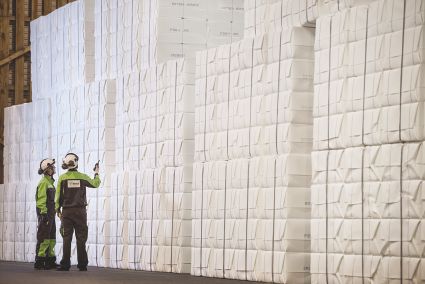
To boost the resource-wise use of the raw material, we have built an industrial ecosystem engaging many partners from around the bioproduct mill’s locality. One great example of this resource-wise thinking at Äänekoski is the process of producing sulphuric acid out of odorous gases, a side stream of pulp production. Also, biogas and product gas are produced in the bioproduct mill’s ecosystem. Metsä Fibre is also investigating the production of pulp-based textile fibers and lignin-based products.
PM: How important is it today to create a bio-based society and economy where nothing unsustainable come out of the system? Can this kind of system be created across industries?
WS: Bioeconomy is based on sustainable use of renewable natural resources. Recyclable bio-based products help reduce dependence on fossil resources and facilitate economic development and creation of new jobs in rural areas. To create added value with bio-based products, the controlled origin and sustainable use of the raw material are of crucial importance.
PM: Paper, which at one point of time came to be branded as unsustainable because of being anti-tree, has of late seen an image makeover and is now being considered as one of the most sustainable products and a fit substitute to polymeric packaging solutions. What do you have to say about it?
WS: Paperboard is a sustainable packaging raw material (wood used to make it comes from sustainable sources). Main raw material is renewable and paperboard can be recycled several times and in the end of the lifecycle used as energy. It is also biodegradable in most cases – also an important factor when thinking about micro plastics.
PM: Tell us about your pulp and paper markets (including India) and the products you supply. Is there any new product which you would like to tell us about?
WS: When it comes to papers Metsä Group is producing tissue and cooking papers, not printing or writing papers. Tissue paper business is local in selected European markets. Cooking papers are sold with increasing speed to global markets.
Fresh fibre paperboard market is also growing very nicely globally, with some 3-4 per cent per annum. Demand for pulp is growing worldwide. The growth rate of the demand for pulp has been two million tonnes per year, with the fastest growth taking place in Asia. Our increasing capacity for pulp production, supported by the Äänekoski bioproduct mill, will strengthen our position, especially in the Asian market.
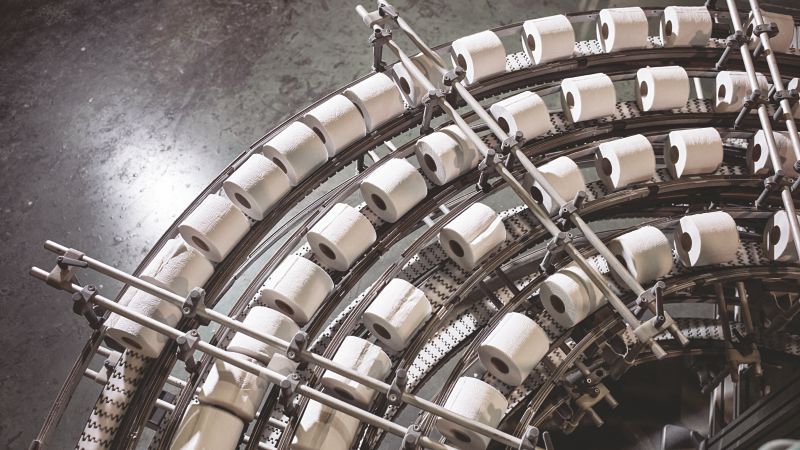
Asia-Pacific area represents a major growth market for Metsa Group. We are expanding our business in sawn timber, engineered wood products such as plywood and LVL (laminated veneer lumber), pulp, fresh fiber based packaging board, baking and cooking papers. APAC currently stands for one fifth of the group’s entire revenue. We have a sales office in Mumbai India selling board to the local customers.
As for the new product, Metsä Group has established a new innovation company, Metsä Spring Ltd and the first concept to be included into Metsä Spring’s portfolio is the new textile fiber production method developed by Metsä Fibre. Metsä Spring is planning a Greenfield demo plant with the capacity of about 500 tonnes of staple fiber per year. Textile fiber is a very potential product and a natural first project for Metsä Spring.


